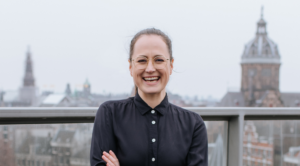Parry Malm is CEO of Phrasee
The year was 2014. Star Wars: The Force Awakens ruled the box office, Bruno Mars’ “Uptown Funk” dominated the airwaves, and the prospect of a Donald Trump presidency and a successful Brexit campaign were (at least for the moment) the stuff of pure fantasy.
Meanwhile, based in a disheveled (but comfortable) flat in North London, a man named Parry Malm (that’s me!) was hard at work trying to solve a common email marketing problem.
I soon realized that this particular problem — that of quantifying the subtle differences between high-performing email subject lines (those which generate a lot of audience engagement) and poorly performing email subject lines (those which don’t), was a surprisingly complex one. Cracking it — and by extension delivering consistently higher-performing email subject lines to brands — required an advanced technological solution.
Fortunately, I knew just the tool for the job: artificial intelligence. Less fortunately, building a bespoke AI tool to actually do the job at scale was going to require some capital, and nobody wanted to give it to me.
“Too niche”. “Not solving a real problem”. “Not a big enough market”. These sentiments echoed from one meeting room to another. My idea was rejected time and time again by London’s skeptical investor community.
Perhaps it was understandable. Back in 2014 no-one was really talking about AI, except in Hollywood blockbusters. It would have taken a lot of imagination at the time to embrace the idea that robots would soon be able to write like humans, let alone write better than them. To make matters worse, many marketing pundits were sounding the death knell of email at the time. The days of email as a viable marketing channel were numbered, they loudly proclaimed. Social media was the shiny new tool, it was the future, and it was already well on its way to digging email’s grave. Using advanced technology to improve email subject line language was, in almost everyone’s estimation, a fool’s errand.
But I knew that they were all wrong.
Undeterred, I eventually convinced two co-founders to join forces with me, and between us we secured the small amount of start-up funding necessary to get our fledgling company off the ground. Then, on 23 April 2015, our company, now named “Phrasee” won its first ‘big’ sale, generating the massive sum of £49 in revenue in one fell swoop. That night, the team at our newly minted AI-powered copywriting company spent £600 celebrating our £49 windfall.
Net profit: – £541.
As it’s turned out, the “niche” product we’ve built and the ‘tiny’ problem we’ve solved has generated more demand and delivered even better results for brands than even we had envisioned. The email channel hasn’t died. Instead, it’s grown. It’s continued to generate huge amounts of revenue. Global email users receive more marketing emails than ever before, and that single line of text beside the sender’s name in consumers’ inboxes has become more crucial to email marketing success with every passing day.
I don’t say all of this purely for bragging purposes (although I do enjoy thinking of all those VCs who turned me away kicking themselves today). Rather, I say it to remind anyone with a business idea who is struggling to get that idea off the ground that the naysayers (and there will be many, I promise you) are gonna naysay. Not because they are smarter than you, mind you, but simply because they don’t share — or don’t understand — your vision.
As I’ve learned through my journey with Phrasee, having a vision and believing in that vision is what really matters.
Hold onto it.
Even if your first sale puts you £541 in the red.









